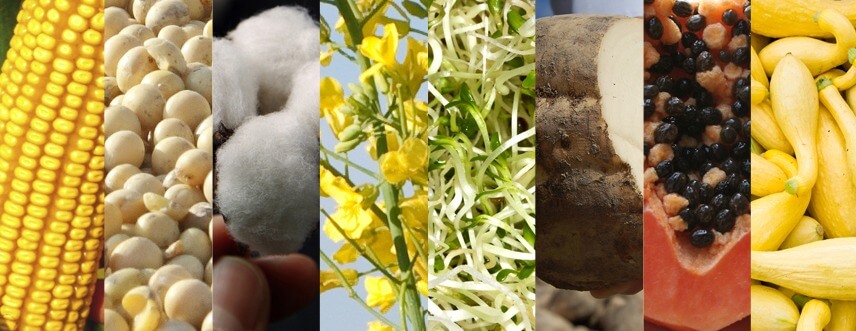Genetically Modified crops are being consumed for the past 25 years and have been beneficial to societies bycontributing to the food value chain, health and economic wellbeing of the farming community. The first GM tomato was licensed for cultivation in 1994. Since then, around 70 countries have been safely cultivating or using GM crops with no scientifically proven adverse reports.
The GM tomato which was developed for longer shelf life by inhibiting a single protein,was found safe for consumption, though it is no longer in cultivation. Similarly, GM crops like rice, soybean, maize, and more have continued to benefit the farmer community as well as the consumers across the world.

The genetically modified crops have enhanced the nutritive content of multiple foods. Also, since it usesless pesticides and fertilizers during cultivation and storage, itpromotes food safety.
Bt brinjal, also known as eggplant or aubergine has been developed to resist fruit and shoot borer (FSB) moth. The Bt brinjal variety is the first GM food crop that was introduced in South Asia. FSB moth is the most destructive crop pest which leads to 95% fruit damage and a yield loss of about 70%.
Bangladesh began to plant Bt brinjal in 2013 and it has helped them in increasing their net yield by more than 40%, while saving 50% investment on the use of insecticides.
Similarly, Bt cotton was approved by the Indian authorities in 2002 which has increased the cotton yield and farmer’s income subsequently. However, due to delayed approvals by authorities, farmers have also missed out on access to improvedvarieties and this has led to high-income losses.
Another good example of the success of GM is the Golden Rice which has been developed to carry beta-carotene (a chemical present in carrots and sweet potatoes) that converts to vitamin A in the body. In South Asia, more than two in every five pre-school children, suffer from lack of Vitamin A which is the major source for vision and eye health. To promote optimum nutrition and enhancing the food value chain, Golden Rice can contribute to tackling the most tragic health issue among the youngest population in Asia. Golden Riceis deemed safe in the US, Canada, Australia, New Zealand and the Philippines, however, countries like India is losing out: an estimated loss of 1.4 million “life years” over a 10-year period and an estimated $200 million (Rs 145 crores) in revenues per year while approval is pending.
GM crops have contributed a lot to the global food chain and has enormous potential to improve other grains and vegetables as well.
However, it requires timely approvals and right awareness for farmers and consumers to adopt the technology. Limiting the approvals for GMcrops also reduces the innovation flow.While GM crops have high potential in strengthening the food value chain and bringing positive changes in farmer incomes, nutrition for consumers, better awareness is required to improve their acceptance in the food chain.
